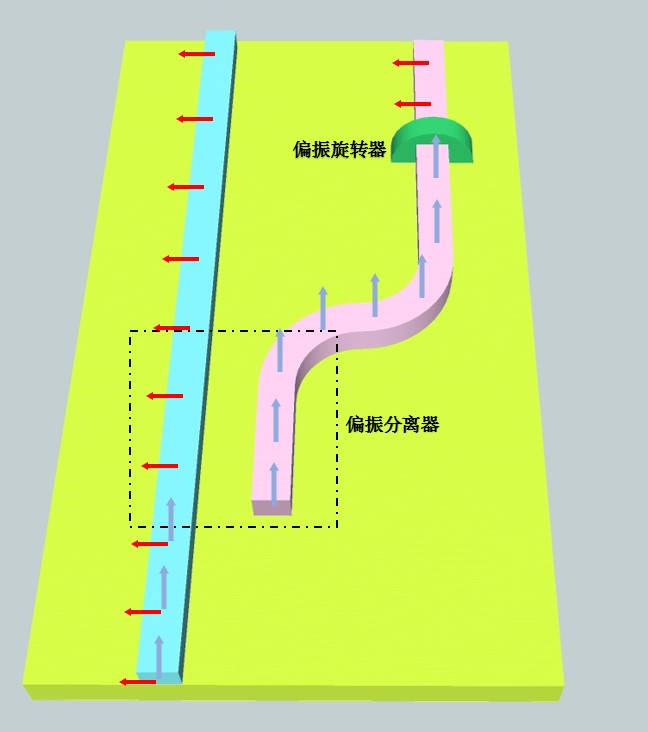|
Polarization control devices mainly include polarization splitting/combiner and polarization rotator: polarization splitting/combiner realizes separation and combination of light of different polarization states; and polarization rotator realizes between two different polarization states. Conversion, such as converting the TE mode in the waveguide to a TM mode. Polarization control devices have very important applications in integrated optical paths, such as the construction of polarization diversity systems to achieve polarization insensitive devices, and the implementation of polarization multiplexing to significantly increase the transmission rate based on existing fiber optic cables. Due to the difficulty and wide application prospects in the integrated optical path, polarization control has become one of the hotspots of silicon-based photonics research.

One of the applications of polarization control devices is to implement polarization insensitive devices on the integrated optical path using polarization diversity techniques. Photonic integrated circuits (PICs) are optical systems formed by combining conventional discrete optical devices on a semiconductor substrate by planarization and miniaturization. Compared to existing discrete devices, PICs enable high-speed, high-capacity information processing. However, the asymmetric waveguide structure and inaccurate processing make a large difference in the propagation characteristics of the TE and TM modes in the waveguide, directly leading to degradation of PICs performance. To solve this problem, the researchers proposed the concept of polarization diversity. The core unit that implements polarization diversity mainly has a polarization splitter and a polarization rotator. The polarization splitter separates the TM and TE modes in the optical signal of the polarization state of the PIC that are coupled into the PIC, and the two polarizations of light enter the two waveguides respectively, after which one of the signal lights passes through the polarization rotator. After the polarization rotator rotates one of the modes, the two signals obtained have the same polarization state, and the two signals can be processed by the same processing optical path without worrying about the performance degradation caused by the difference in propagation characteristics. .
The principle of the polarization control device is mainly based on waveguide optics. By calculating the coupling efficiency between the eigenmodes in waveguides of different structures, adjusting the waveguide structure parameters, etc., the basic structure can be established. However, before finalizing the parameters, simulation software such as FIMMWAVE and COMSOL is required to simulate the designed device and adjust the size of the parameters to determine the final device parameters. After the device parameters are determined, the Ledit and other software are used to draw the published image, and a polarization control device can be fabricated through electron beam exposure, etching, and the like.
Because the polarization control device greatly enhances the performance of PICs, it can realize the core technology of future ultra-large-capacity optical communication such as partial division multiplexing, and plays an important role in high-density optoelectronic integration. Many scientific research institutions at home and abroad conducted indepth research. Foreign research institutions include MIT, Santa Barbara, Harvard University, and Telegraph and Telephone Corporation (NTT). The main domestic universities include Zhejiang University, Jilin University, National University of Defense Technology, and Institute of Semiconductors of the Chinese Academy of Sciences. The polarization control devices designed or fabricated at this stage range in length from 610nm to 100um, which can meet the integration requirements; the extinction ratio ranges from 10dB to 30dB. However, due to the influence of processing errors, there are still few devices that can be put into practical use at this stage. With the rapid development of PICs research, the demand for polarization control devices is becoming more and more urgent.
Our research group has a good research foundation in the research of polarization control devices, and is currently conducting research in depth.
|

